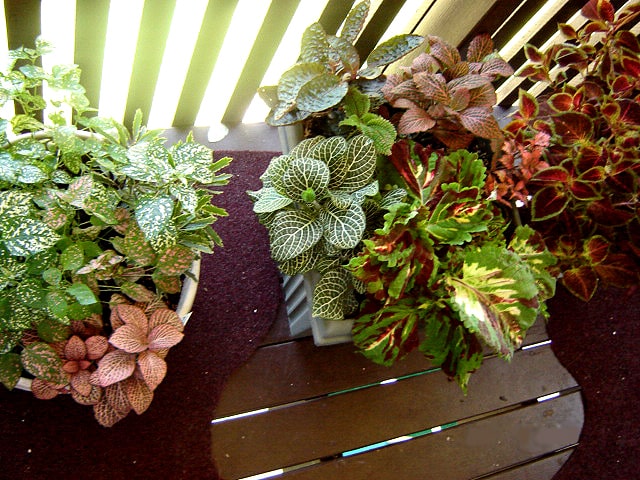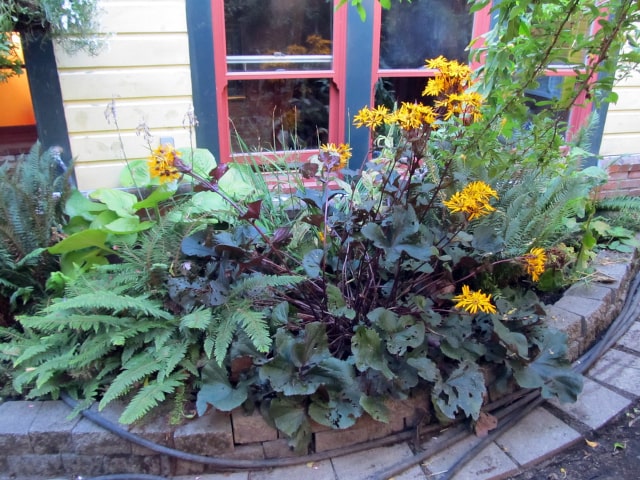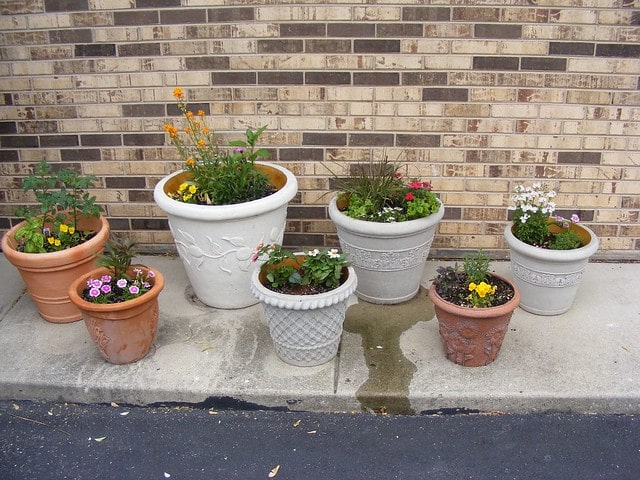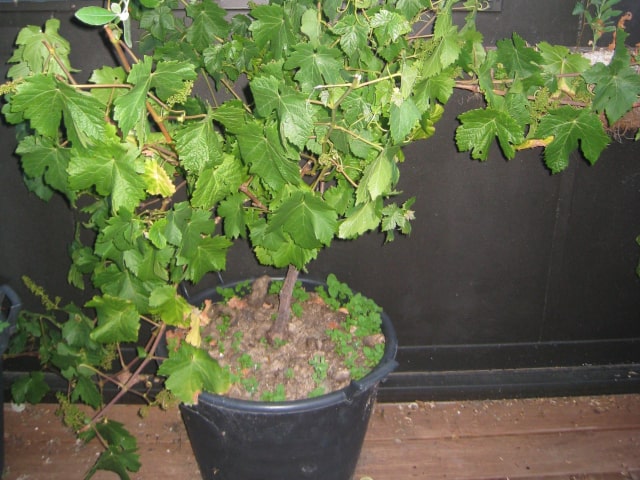
In case your balcony is shaded by another building or tall trees and kept in shade you may think it's not good enough for plants. However, it's still possible to have a beautiful container garden, growing in the shade.
Here are some good tips on how to grow your container garden on a shady balcony.
Determine How Much Shade You Have
The first step is to determine how much shade you have. Watch your balcony for a whole day and observe the changes in shade. Simply check it out every hour or so and observe whether is sunny or shady. It's also important to keep in mind that you might have different types of shade on different parts of your balcony.
If you have 3 to 6 hours means that your balcony is suitable for partial sun and partial shade plants. In case the balcony plants receives a continuous stream of light filtered through the branches or a nearby building, it's suitable for plants that need filtered or dappled light.
If you have less than 3 hours of sun, your balcony is suitable for plants that need full shade.
Selecting Appropriate Plants
Once you know what kind of shade you have on your balcony, it's important to select plants appropriate for the conditions on your balcony. Here are some of the good suggestions for good plants for your balcony.
If you have 3 to 6 hours of sun, you may grow:
- Blackberry Lily. Its foliage looks similar to Iris plants, but the flowers are deep orange and tropical-looking.
- Monkshood (Acontium). This is a member of the buttercup family. It has tall flower spikes in various shades of purple, white, blue, yellow or pink.
- Primrose. It has a wide variety of flower colors and the plant itself is bushy.
- Bleeding Hearts (Dicentra). This plant has delicate strands of white or light pink flowers.
If you have dappled light on the balcony:
- Trillium. This plant has small, three-petaled flowers in white or red. The flowers should not be picked because it can damage the plant.
- Columbine (Aquilegia). It has delicate flowers in many colors: red, pink, yellow, white and purple.
- Bluebells. These plants are covered in small, blue, bell-shaped flowers in spring. The flowers are lined up in rows along arched stems.
- Caladium. This plant has large, tropical leaves. The leaves are flecked with white, green or magenta.
- Japanese Maples (Acer palmatum). This plant has various varieties. Dwarf varieties are ideal for balconies. These plants come in a wide variety of colors, leaf shapes and growth habits, so there are numerous varieties to choose from.
If your balcony is in the full shade:
- Astilbe. This plant has fern-like foliage and long-lasting flowers.
- Bleeding Hearts (Dicentra). It has white or light pink flowers on delicate strands.
- Trilium. This plant can also grow in full shade.
- Ferns. Certain ferns can grow in full shade. It's best to choose more unusual varieties, such as Japanese Painted Ferns.
Soil, Fertilizer and Pots
After you have chosen your plants, you will need to pick appropriate soils, fertilizers and pots. It's important to read plant information when you purchase your plants to see all the care requirements when it comes to soil and other things.
When considering shade-loving plants, remember that most of them were originally found growing on forest floors. The soil in those areas are rich in nutrients and slightly acidic. It's best to use soil specially made for Azaleas. Don't use soil from your garden: it's often too clay-like for container plants and it may bring pests, weeds and diseases.
Another thing to keep in mind is that soil on the forest floor is cool and moist. Therefore, it's best to pick terra cotta pots for your shade-loving plants.
When it comes to fertilizers, those made for Azaleas will keep the soil acidic. However, it's important to never overdo the fertilizer. If you choose potting soil for Azaleas you might not need Azalea fertilizer. Consult gardener and read tags on the plants you buy to find the best fertilizer treatment for your plants.
Planting
You should arrange pots in their intended locations before planting because it will be difficult to move them after you have planted the soil. The pots farthest in the back should contain the most soil. Mix a bit of time-released fertilizer. Without removing the nursery pots and arrange the plants in the pot. When you decide on the best arrangement you want to use, gently remove the nursery pot. Make sure to loosen the roots if they are rootbound. Place the plants in the desired location.
It's always best to keep the base of the plant about an inch below the lip of the pot. Add or remove the soil if needed to achieve that. Also, don't forget to fill in the holes between the plants with more potting soil.
When all of the pots are planted, water them thoroughly. Make sure not to get water on the leaves.
Caring for Your Plants
Shade plants enjoy moist soil, so it's best to provide it. Check your plants regularly and whenever the soil feels dry, water them. On the other hand, it's important to never over-water your plants, since most of them don't like to sit in water. What you want to have is the evenly damp soil, not soggy. Another thing to keep in mind is to never get water on the leaves.
Shady areas are good places for mold, fungus and mildew growth, so you should inspect your plants regularly to see if they are healthy. If you keep water off the leaves it will help preventing fungus, mold and mildew growth.
You should fertilize your plants according to their needs. Container plants usually need more frequent fertilizing than plants that grow directly in the ground because every time you water the plants you wash out the nutrients from the soil.
Another thing to watch out are pests, such as snails and slugs. They enjoy shade so while they can't climb high enough on most balconies, in case you live on the first floor you should watch out. If you notice slugs or snails you can simply pick them off to remove them from your plants. There are also certain home remedies you can use to keep these pests away from your plants.
Photo credit: Mary Anne Enriquez




0 Comments